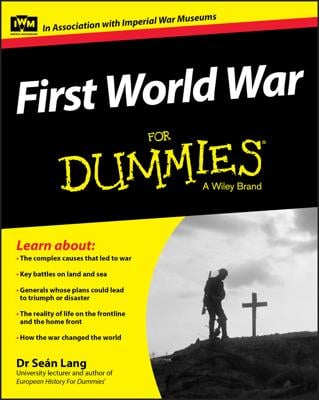In 1912 Woodrow Wilson was elected President of the United States. Wilson successfully kept Americans troops out of World War I during his first term. However American involvement became inevitable later on in World War I.
As the European powers squared off in 1914 in what was to be four years of mind-numbingly horrific war, America managed to somewhat nervously mind its own business. Wilson, in fact, won reelection in 1916 using the phrase “he kept us out of war.”
As time passed, however, the country began to side more often with Britain, France, and other countries that were fighting Germany. The sinking of the British passenger ship, Lusitania, by a German submarine in 1915, which resulted in the deaths of 128 Americans, inflamed U.S. passions against “the Huns.”
Propagandistic portrayals of German atrocities in the relatively new medium of motion pictures added to the heat. And finally, when it was revealed that German diplomats had approached Mexico about an alliance against the United States, Wilson felt compelled to ask Congress for a resolution of war against Germany. He got it on April 6, 1917.
The U.S. military was ill-prepared for war on a massive scale. Only about 370,000 men were in the Army and National Guard combined. Through a draft and enlistments, however, that number swelled to 4.8 million in all the military branches by the end of World War I.
At home, about half of the war’s eventual $33 billion price tag was met through taxes; the rest was funded through the issuance of war bonds. Organized labor, in return for concessions such as the right to collective bargaining, agreed to reduce the number of strikes.
Labor shortages drove wages up, which in turn drove prices up. But demand for goods and services because of the war soared, and the economy hummed along, despite government efforts to “organize” it.
In Europe, however, no one was humming. American troops, like their European counterparts before them, found that modern warfare was anything but inspiring. The first U.S. troops were fed into the lines as much to shore up the morale of the Allies as anything else. But by the time the Germans launched their last desperate offensive, in the spring of 1918, more than 300,000 American troops had landed in France. By the war’s end in November, the number of Yanks had swelled to 1.4 million.
Led by Major General John “Black Jack” Pershing, a celebrated veteran of the Spanish-American and Philippines wars, the U.S. forces, known as the American Expeditionary Force (AEF) fought off efforts by Allied commanders to push the AEF into a subordinate role as replacement troops.
Starting with the battles of Cantigny, Chateau-Thierry, and Belleau Wood in France, the AEF proved itself an able force. In September 1918, the Americans launched an attack on a German bulge in the lines near Verdun, France. U.S. and French troops captured more than 25,000 prisoners, and the German military’s back was all but broken. At the 11th hour of the 11th day of the 11th month of 1918, Germany called it quits, and the fighting stopped.
American losses — 48,000 killed in battle, 56,000 lost to disease — seemed trifling compared to the staggering costs paid by other countries. Germany lost 1.8 million people; Russia, 1.7 million; France, 1.4 million; Austria-Hungary, 1.2 million; and Britain, 950,000. “The War to End All Wars,” as it was called, turned out to be just another test of humans’ aptitude for killing other humans in large quantities.

